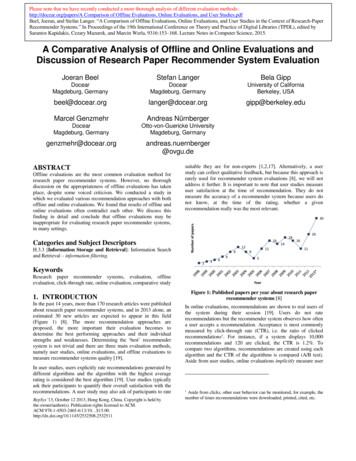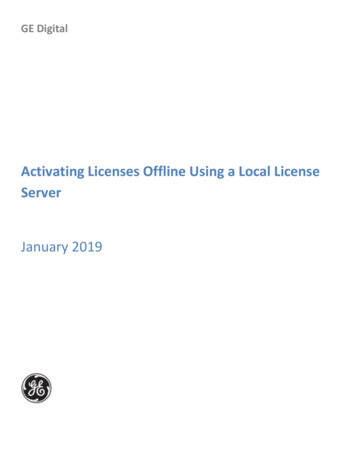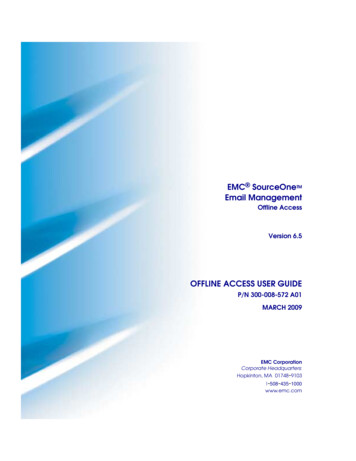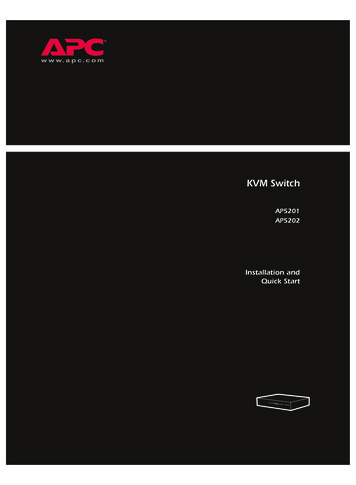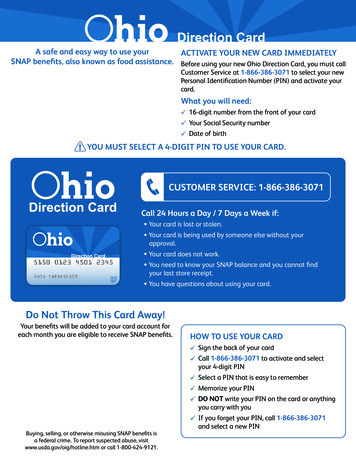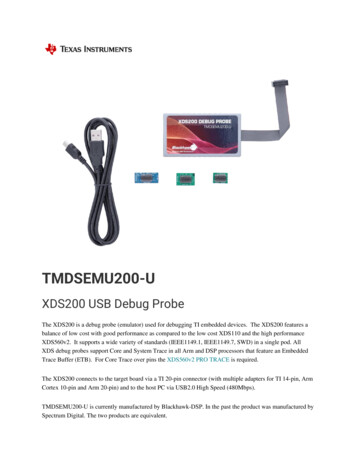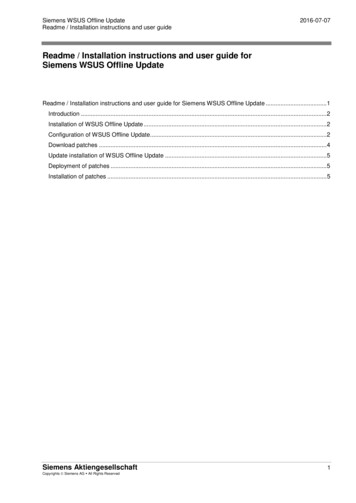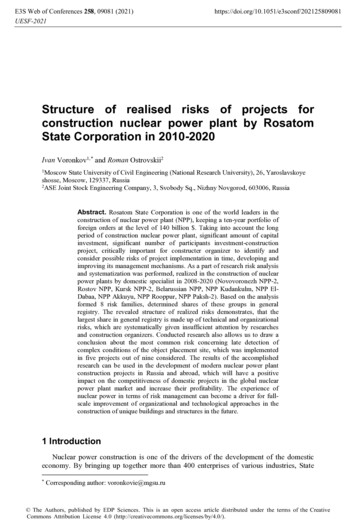
Transcription
Risks of Offline Verify PIN on Contactless CardsMartin Emms, Budi Arief, Nicholas Little, and Aad van MoorselSchool of Computing Science, Newcastle University, Newcastle upon Tyne, @ncl.ac.ukAbstract. Contactless card payments are being introduced around the world allowingcustomers to use a card to pay for small purchases by simply placing the card onto thePoint of Sale terminal. Contactless transactions do not require verification of the cardholder’s PIN. However our research has found the redundant verify PIN functionalityis present on the most commonly issued contactless credit and debit cards currently incirculation in the UK. This paper presents a plausible attack scenario which exploitscontactless verify PIN to give unlimited attempts to guess the cardholder’s PIN without their knowledge. It also gives experimental data to demonstrate the practical viability of the attack as well as references to support our argument that contactless verify PIN is redundant functionality which compromises the security of payment cardsand the cardholder.Keywords. Contactless Payments, Verify PIN, NFC, EMV, Chip & PIN, Credit Card,Debit Card, Card Payment.1IntroductionThe EMV1 specifications [5][6] control the operation of 1.5 billion of payment cards and21 million of Point of Sale terminals worldwide [15]. EMV payments can be contact transactions commonly termed Chip & PIN or contactless transactions also known as Near FieldCommunication (NFC).Contact payments require the cardholder to insert their card into the Point of Sale terminal and enter their PIN to authorise the transaction. Contact transactions can be any valueup to the card limit or available balance on the card. Contactless payments are designed tobe a convenient way to pay for low value transactions (currently up to 20 per transaction inthe UK) with a card rather than cash. Designed to be faster than a traditional Chip & PINtransaction, the card is simply placed in close proximity (approximately 4cm) to the Point ofSale terminal to authorise the payment, PIN entry is not required.In the UK the EMV specification for contact transactions supports PIN verification locally by the card (offline) and PIN verification remotely by the bank’s computers (online).The specifications for contactless transactions specifically exclude the use of offline PINverification (full details in [6] Book A section 5.9.3 and [10] section 2.4 point 5). Contact-1Europay, MasterCard, Visa is a collaboration between Visa, MasterCard, American Express and JCBto create an interoperable card payment system.
less offline PIN verification requires the PIN to be transmitted wirelessly to the card whichposes a security risk from eavesdropping.The EMV specification only permits PIN entry in contactless transactions made usingNFC enabled mobile devices. PIN entry is not permitted for contactless card transactions.Mobile device payments are controlled by Consumer Device CVM 2 rules, which permitonline PIN verification, but not offline PIN (full details in [6] Book C3 sections 2.1 and 5.7).This paper examines the security implications of the verify PIN functionality intended forChip & PIN operation also being available over the contactless interface, where it can beaccessed without the cardholder’s knowledge or consent. Surprisingly many of the contactless cards currently in circulation in the UK allow access to offline verify PIN.The attack scenario presented draws upon research carried out into the predictability ofPINs [2] which shows that there is a subset of PINs that are much more commonly used;meaning guesses from this subset are much more likely to be successful.The implementation work builds upon related investigations into the vulnerability ofEMV contactless payment cards to various attacks, such as skimming [7][8] and transactionrelay [4][9]. These papers show that the wireless interface makes contactless payment cardsvulnerable to new modes of attack that were not present in Chip & PIN. O
the UK) with a card rather than cash. Designed to be faster than a traditional Chip & PIN transaction, the card is simply placed in close proximity (approximately 4cm) to the Point of Sale terminal to authorise the payment, PIN entry is not required. In the UK the EMV specification for contact transactions supports PIN verification lo-
